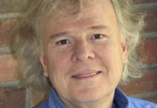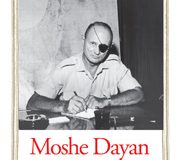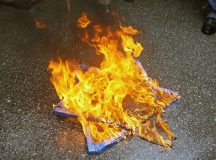Growing up in the West Romanian town of Timisoara in the 1950s as the only child of a Holocaust-ravaged Hungarian-speaking Jewish family, there were few moments of pride and joy for my parents with the dangers of Stalinism following the horrors of Nazism. But, unlike for my mother, sports accorded my father rare moments of delight, respite and most important, pride which he always readily shared with me. I will never forget how his entire demeanour changed from worry to confidence when he regaled me with the feats of Hakoah Vienna, the famed all-Jewish football club that became champions of Austria in the 1924-25 season. (The goalkeeper broke his arm in the all-decisive game but, with his arm in a sling, changed positions with one of the team’s forwards – no substitutions allowed in those days – and scored the winning goal a few minutes later, thus assuring Hakoah the title.)Then, of course, there was Max Baer, who in June 1933, wearing trunks that displayed a Star of David, defeated none other than the German heavyweight Max Schmeling in Yankee Stadium. (To his dying day, my father would never forgive me for informing him decades later, safely ensconced in America, that Baer, despite his Star-of-David adorned trunks, was not Jewish.)
This all made sense in some ways because football and boxing were sports that my father knew and loved as a Central European Jew of his era. But there was one more character of mythic proportions whom my father would mention with equal frequency and total pride and who emanated from a sport that my father had never seen and about which he knew absolutely nothing: A certain Hank Greenberg who – in distant America, playing some strange game called baseball – would do something that nobody had ever done before him: hit balls outside the stadium with a weird bat-like contraption and refuse to play on Yom Kippur. I never really ascertained how my father came to know about Hank Greenberg in 1950s Romania. Perhaps it was via his older brother who immigrated to New York after Auschwitz in 1946 – my uncle was completely disinterested in sports though not, of course,in the fate of the Jewish people.
That my father probably knew about Greenberg via some sort of cultural osmosis rather than the concrete transfer of concrete information was evidenced by the fact that, in my father’s imagination, baseball’s home run, i.e. hitting the ball hundreds of feet over the fence, mutated into hitting the ball hundreds of metres sending it outside the stadium. Greenberg meant so much to my father for two reasons: he was a tough guy, a real Shtarker to use the Yiddish term or its Hebrew equivalent of ba’al guf, but he was also a good Jew, proud of his people and true to his heritage – which he demonstrated beyond any reasonable doubt by refusing to play on Yom Kippur.
Mark Kurlansky’s excellent book takes the reader from Greenberg’s birth to immigrant Jews and his adolescence in the Bronx of the 1910s and 1920s, through his rise to becoming one of the greatest baseball players, certainly one of the game’s premier all-time sluggers and genuine superstars in the 1930s and 1940s; to his death in Beverly Hills in 1986. In doing so Kurlansky also offers us a wonderful story of American Jewry’s 20th century trajectory from the Bronx to Beverly Hills, and all that these two places, so distant in geography, climate, lifestyle and culture, embody.
Kurlansky presents Greenberg as a decent and modest man who loved and respected his parents and wanted nothing more than to live a ‘normal’ life. But his inordinate talent to hit a baseball extremely far with great frequency rendered all this if not impossible than a good deal more complicated than he wanted and expected. One of the complications lay in the viciously vocal anti-Semitism dominating the American public in the 1920s and 1930s. Kurlansky makes it clear what constant abuse – way beyond the taunting that accompanies many sports – Greenberg had to endure on a daily basis. Even when not being called a ‘kike’ or ‘sheeney’ or worse, the press almost never mentioned Greenberg’s name without the adjective ‘Hebrew’ or ‘Jewish.’ And making matters even worse was the fact that Greenberg played for the Detroit Tigers, home team of arguably the two most influential anti-Semites at the time and possibly in much of American history, Henry Ford and Father Charles Coughlin. So no matter how non-religious Greenberg was, and how desperately he wanted to be just a ballplayer and not a Jewish ballplayer, this was simply impossible. Greenberg was a Jew in 1930s America whether he wanted to be or not.
A related complication of Greenberg’s story involves Jewish culture, which extolled achievement and wanted its males to attain success in ‘brainy’ fields like medicine, law, business and scholarship while at the same time disdaining any athletic career which was for the goyim but not for good Jewish boys. And yet, of course, these very fathers who expected that their boys become doctors rejoiced when a Jew committed an act of strength which automatically bespoke a defiance of the surrounding anti-Semitic world, while simultaneously according the Jews pride and dignity. Thus, Kurlansky makes the fine point that plenty of Jews preceded Greenberg in baseball, some were his contemporaries and a good number followed him. But none were home run sluggers who hit 58 in one season just two shy of the 60 attained by the God-like Babe Ruth; none hit 183 RBI’s (Runs Batted In – rather like an ‘assist’ in football) in one season; none attained a .313 lifetime batting average; and 1.017 life-time on-base slugging – awe-inspiring numbers to this very day. In other words, Greenberg was the prototypical shtarker, whose bat – thus prolific offensive power – showed the world that Jewish men were not only weaklings and geeks, but could also perform Maccabean and Samson-like physical feats. Even if Greenberg’s batting prowess could not actually defeat Hitler and Ford and Coughlin and their ilk, it gave the Jews a modicum of pride and dignity. It is precisely because millions of people actually understand and appreciate achievements in sports, unlike, say, in science, that such feats become cherished as affirmative acts of identity for threatened and insecure minorities. After all, by hitting home runs for the Tigers, Detroit’s gentiles also came to love Hank Greenberg which possibly led to their hating Jews less, if not ever to love them. Kurlansky informs us that Greenberg’s not playing for the Tigers on Yom Kippur in 1934 (his own decision) and 1935 (he was injured) was not really a big deal for him. But Kurlansky’s book makes it equally clear what a huge deal this was for all of American Jewry – and apparently for at least one Hungarian Jew in distant Timisoara as well.





































